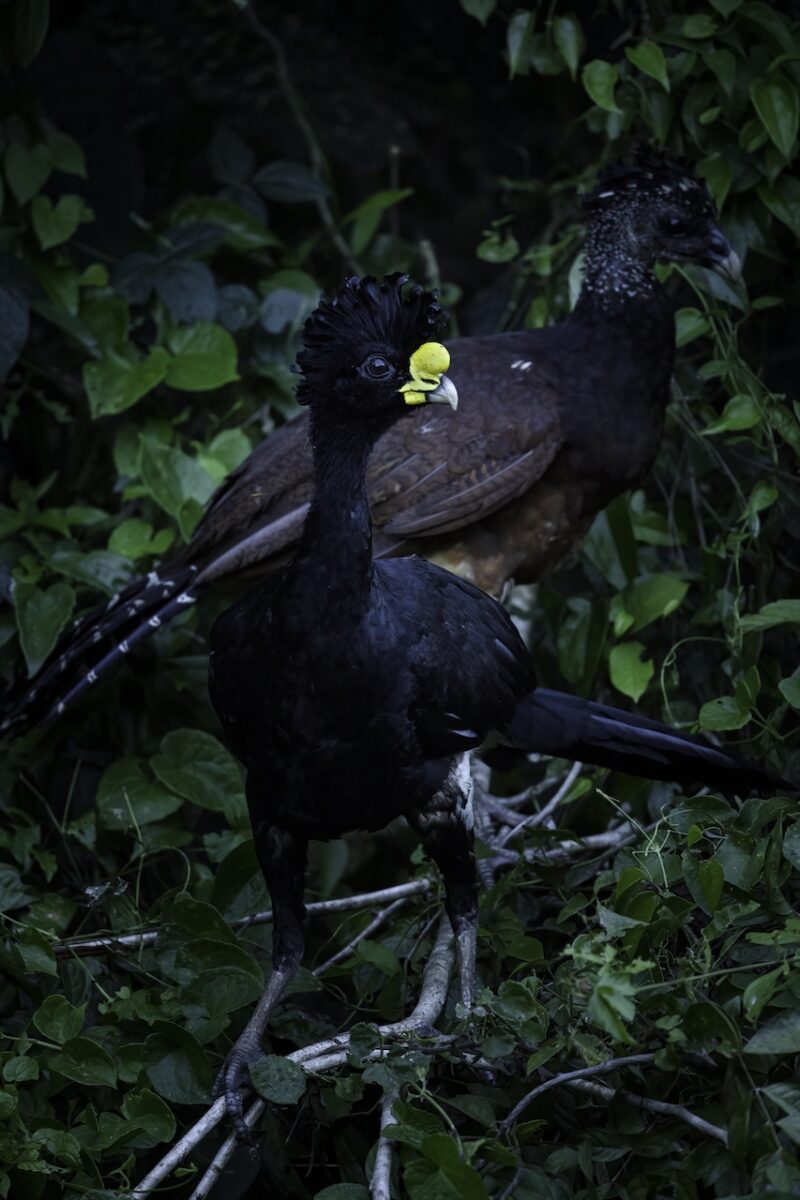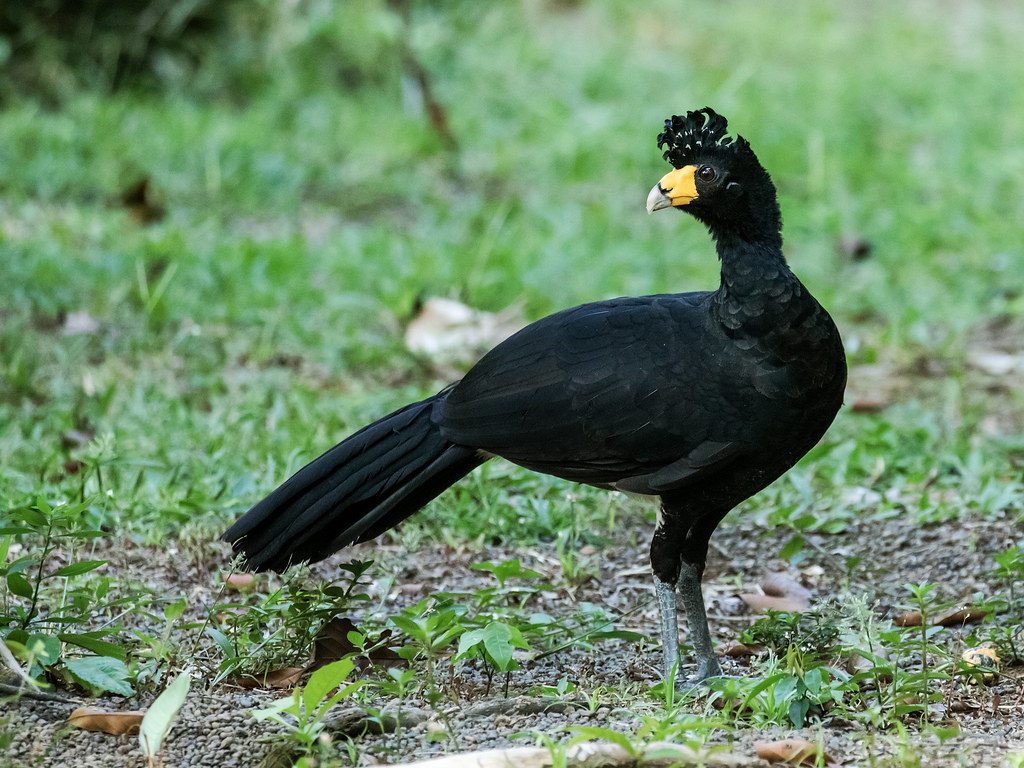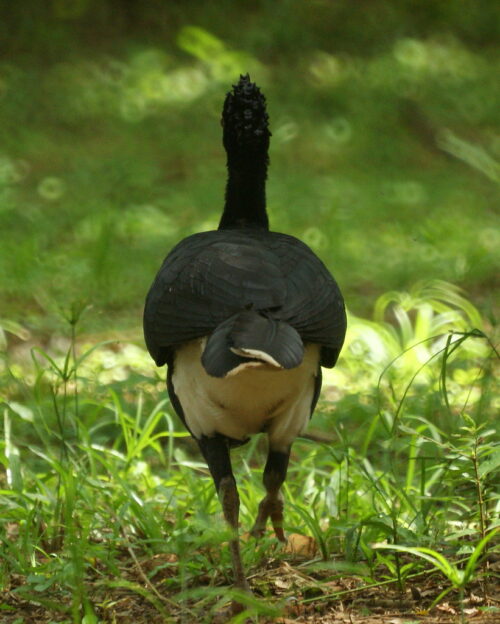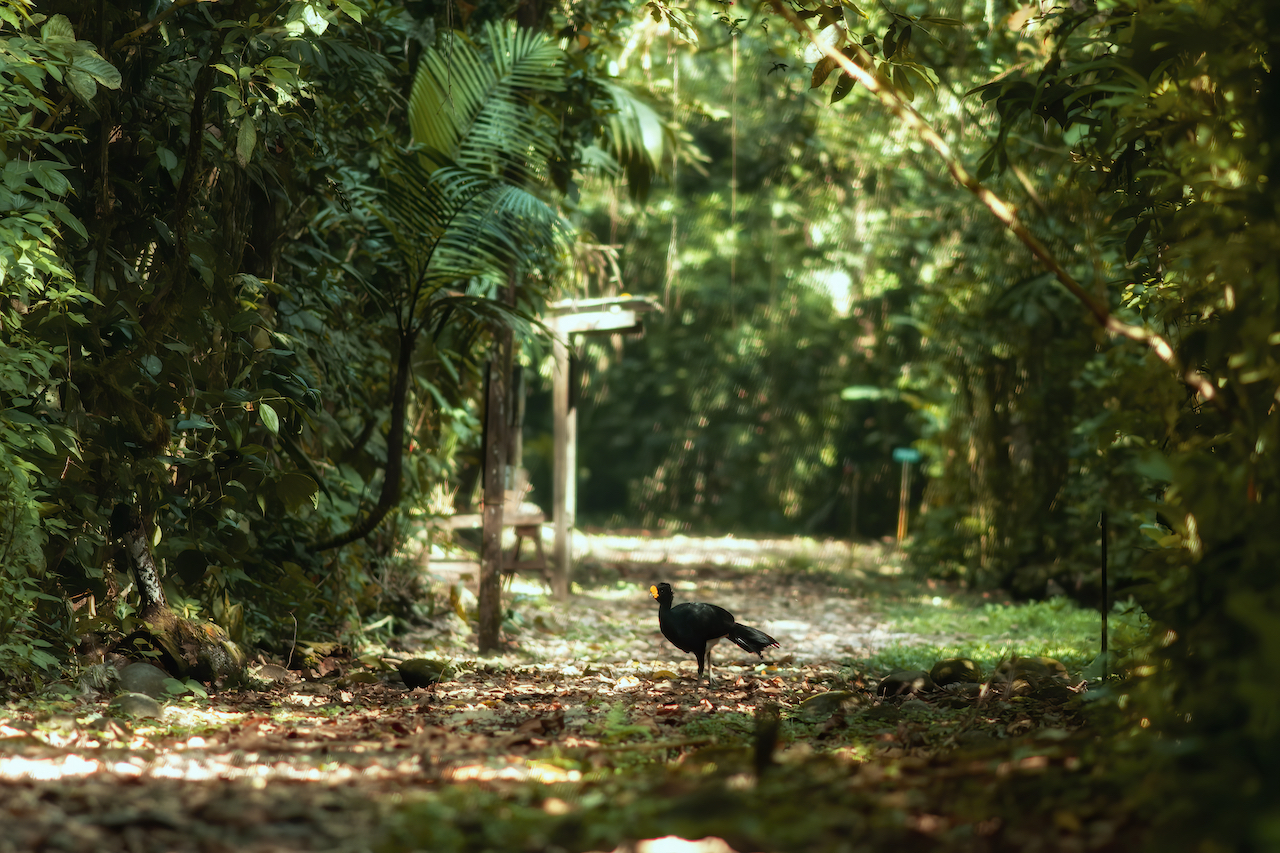What species of Curassows are found in Costa Rica?
The Great Curassow

- KINGDOM: Animalia
- PHYLUM: Chordata
- CLASS: Birds
- ORDER: Galliformes
- FAMILY: Cracidae
- GENUS: Crax
- SPECIES: Crax rubra
The Great Curassow is the largest of all the guans present in Costa Rica, it presents sexual dimorphism, the male being black in most of its body with white lower parts, it is characterized by its crest and its deep yellow mucus , the female is mostly brown, with a barred-spotted pattern, the upper part of her chest is blackish and her head is black with white dots, it does not present mucus.
Description.
At 78–100 cm (31–39 in) in length and 3.1-4.8 kg (6.8-10.6 lb) in weight, this is a very large cracid. Females are somewhat smaller than males. It is the most massive and heavy species in the family but its length is matched by a few other crabs. Three other species of curassow (the northern helmeted, the southern helmeted, and the black are all around the same average length as the great curassow. In this species, standard measurements are as follows: the wing chord is 36 to 42.4 cm (14.2 to 16.7 in), the tail is 29 to 38 cm (11 to 15 in) and the tarsus is 9.4 to 12 cm (3.7 to 4.7 in). They have the largest mean standard measurements in the family, other than tail length.
The male is black with a curly crest, a white belly, and a yellow knob on its bill. There are three morphs of female great curassows: barred morph females with barred neck, mantle, wings and tail; rufous morph with an overall reddish brown plumage and a barred tail; and dark morph female with a blackish neck, mantle and tail (the tail often faintly vermiculated), and some barring to the wings. In most regions only one or two morphs occur, and females showing a level of intermediacy between these morphs are known (e.g. resembling rufous morphs, but with black neck and faint vermiculations to the wings).
This species has a similar voice to several other curassows, its call consisting of a «peculiar» lingering whistle.
Ecology.

A monogamous species, the great curassow is distributed in rainforest from eastern Mexico throughout Central America, to western Colombia and northwest Ecuador. The great curassow spends much of its time on the ground, but nests and roosts in trees. This species is gregarious, occurring in groupings of up to a dozen birds, though occasionally birds can be seen alone. Its diet consists mainly of fruits, figs and arthropods. Small vertebrates may supplement the diet on occasion, including small mammals (such as rodents). Unlike other cracids, such as guans, they feed largely on fallen fruit rather than pluck fruit directly from the trees.
The male Great Curassow may build the nest and attract a female’s attention to it, though in other cases both members of a pair will build the nest structure. Two eggs are typically laid in a relatively small nest (usually made largely of leaves), each egg measuring 9.1 cm × 6.7 cm (3.6 in × 2.6 in) and weighing 200 g (7.1 oz). The young curassow weighs 123 g (4.3 oz) upon hatching; 2,760 g (6.08 lb) as a half-year-old immature fledgling; and by a year of age, when fully fledged and independent of parental care, will be about three-quarters of their adult weight at 3,600 g (7.9 lb).
This species has been noted for its rather aggressive temperament, which has been regularly directed at humans when the birds are held in captivity. Undoubtedly, they have this inclination in order to repel natural predators, from both themselves and their offspring. Known natural predators of this species have included ocelots and ornate hawk-eagles, though chicks and eggs likely have a broader range of predators. When a potential predator is near their offspring, curassows have been noted to engage in a distraction display, feigning injury. When attacking humans, the curassows leap in fluttering flight and scratch about the head, targeting the eyes. Their lifespan in captivity has reached at least 24 years.
Status.

Due to ongoing habitat loss and overhunting in some areas, the great curassow is evaluated as Vulnerable on the IUCN Red List of Threatened Species. It is listed on Appendix III of CITES in Costa Rica, Guatemala, Colombia and Honduras.
This species has proven to produce fertile hybrids with its closest living relative, the blue-billed curassow, and also with the much more distantly related black curassow.
In Mexico some organizations are breeding great curassows in captivity.

